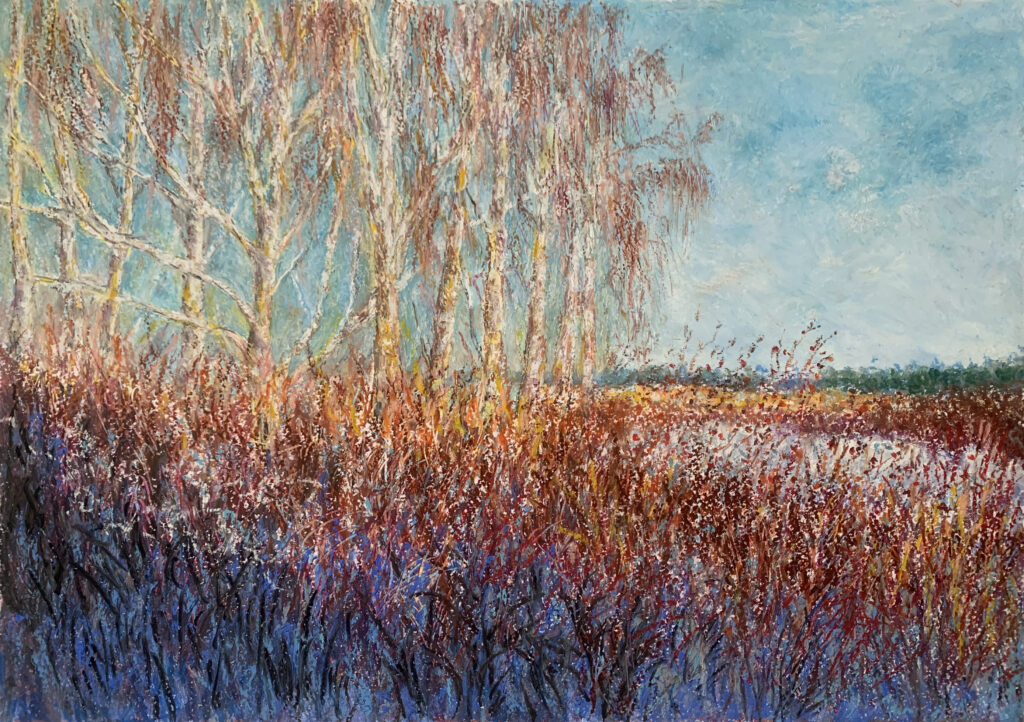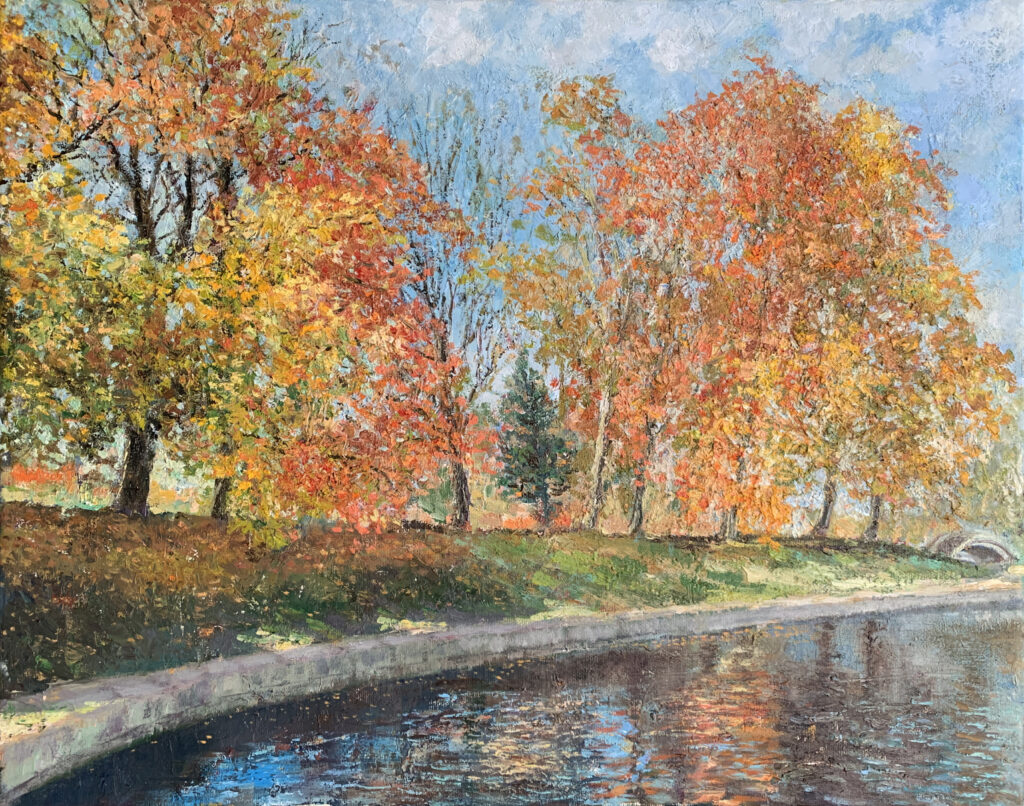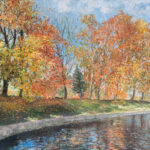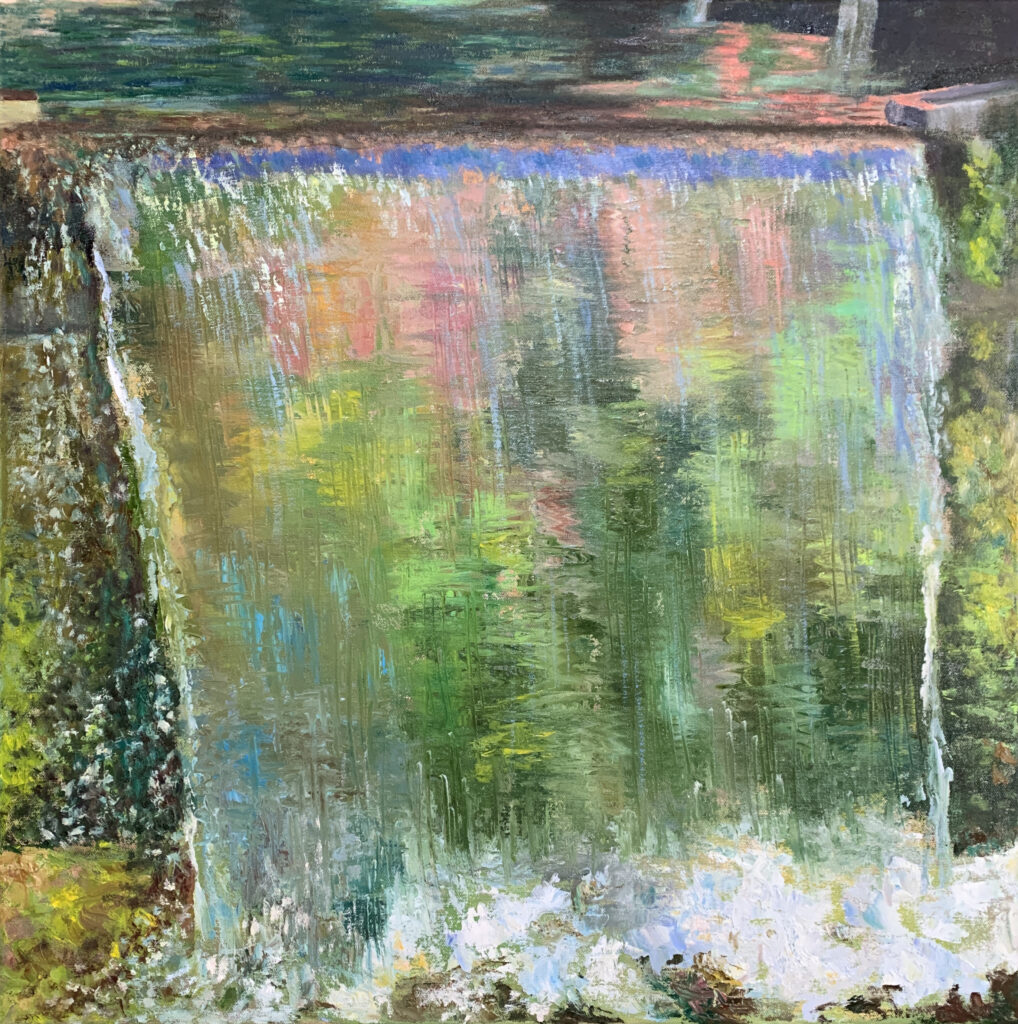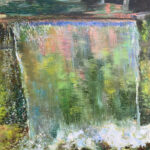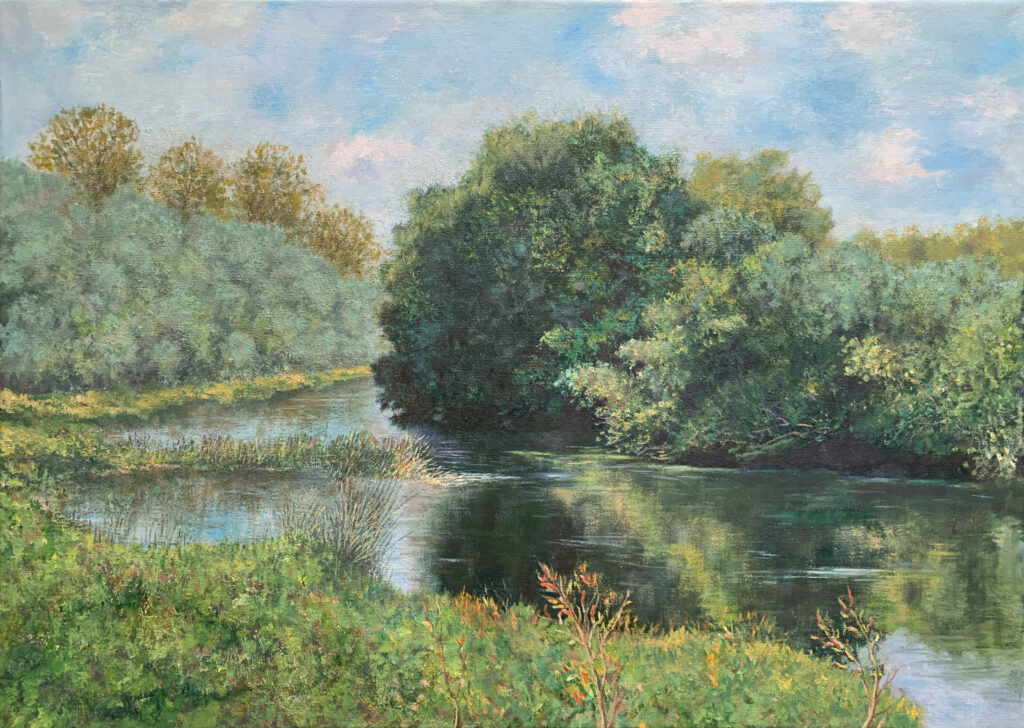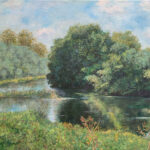Paintings I love
Gustave Caillebotte (French, 1848-1894)
Rive de la Seine au Petit-Gennevilliers
oil on canvas, 60.3 x 73.3 cm.
Painted circa 1888
Private collection

In Rive de la Seine au Petit-Gennevilliers Caillebotte presents a peaceful vision of life on this stretch of the Seine, away from the hustle and bustle of the boatyards and the crowds of fashionable Parisians that filled the riverbanks every weekend. The composition is divided into a sequence of four horizontal bands—the riverbank in the foreground, the shimmering surface of the waterway at the centre, the houses and promenade on the opposite shore, and the vast expanse of the cloudless sky above—receding backwards to create a carefully structured spatial environment.
Employing a vivid, fresh palette and lively, loose brushwork, the painting is a resplendent study of the nuances of sunlight on a typical summer day, its beams falling through the leaves of the trees and onto the grassy bank before the artist, creating pools of sunshine on the otherwise shaded stretch of land. The soft, hazy blue sky and quiet, sun-dappled waterway are typical of the Impressionist vision of the Seine, though the presence of the red-roofed, sun-bleached cluster of buildings on the opposite bank may also be a subtle acknowledgement of the transformation of Argenteuil and Petit-Gennevilliers into bustling suburbs during the 1870s and early 1880s, their formerly pristine landscapes now filled with summer homes and growing local industry.
While the scene contains echoes of Monet’s visions of Argenteuil in particular, Rive de la Seine au Petit-Gennevilliers also captures the heightened individualism of Caillebotte’s painterly style during this period, not only in the brightness of his colors, but also in his choice of bold viewpoints and unconventional vistas.
Here, the manner in which the buildings are glimpsed through a series of small gaps between the slender tree trunks lends the scene a dynamic sense of movement, as if the artist has captured a snapshot of the view mid-stroll. By placing the trees in an a-symmetrical compositional arrangement, he plays with the traditions of the classical repoussoir framing device, positioning the houses off-centre, and allowing the tree itself to occupy the central axis of the canvas instead. At the same time, Caillebotte uses a radical cropping technique along the left edge of the composition, so that the next tree along is only indicated by the presence of its verdant branches, glimpsed at the upper left corner of the canvas as they mingle with the foliage of the central sapling. In this way, Caillebotte creates an impression of his own movement through the landscape, wandering along the river banks, glancing at the rippling, ever-changing surface of the river through the trees, captivated by the unexpected views he encounters along the way.
Source: Christies
Follow my art blog “Paintings I Love” in Instagram, Telegram, Pinterest, Twitter


